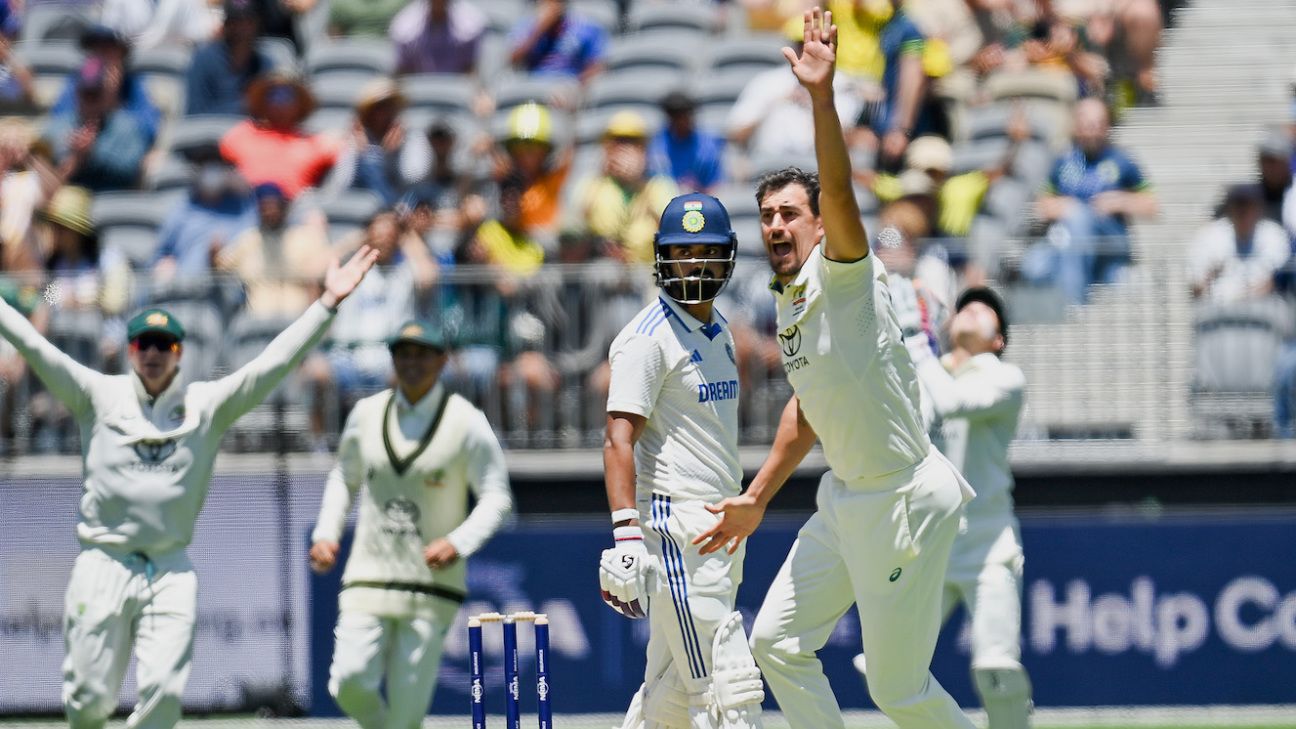 |
|
The first day of the Border-Gavaskar Trophy Test match between India and Australia in Perth witnessed a controversial moment that ignited a debate surrounding the effectiveness of the Decision Review System (DRS). India's opening batsman, KL Rahul, was given out LBW through a debatable DRS decision, sparking criticism from commentators and experts alike. The incident unfolded when bowler Mitchell Starc appealed for an edge, with wicketkeeper Alex Carey suggesting a faint sound. While on-field umpire Richard Kettleborough initially deemed Rahul not out, the Australians opted for a review. The Snicko technology displayed a spike, suggesting a possible nick, yet its interpretation was far from conclusive. The spike could have been from the ball hitting either the bat or the pad. This ambiguity fueled the controversy that followed.
Sanjay Manjrekar, a prominent cricket commentator, was particularly vocal in his criticism of the decision-making process. He argued that the technology provided insufficient evidence to justify overturning the on-field umpire's original verdict. Manjrekar highlighted the lack of clarity in the available visual evidence, stating that the only unambiguous visual was the bat hitting the pad, while the purported edge required technological assistance to confirm. He emphasized that such an important decision in a high-stakes match should not hinge on inconclusive technological interpretations. His critique extended to the actions of the third umpire, Richard Illingworth, suggesting that the umpire should have refrained from overturning the decision if the evidence was ambiguous. The lack of additional angles requested by the third umpire further fueled the criticism. Manjrekar's assessment of the technological support available to the TV umpire was particularly harsh, describing the supply of technology as 'poor.'
Other prominent figures in the cricket world expressed their views on the contentious decision. Wasim Jaffer, a former Indian cricketer, tweeted his disapproval of the decision and the process by which it was made. He highlighted the lack of definitive proof and criticized the third umpire for overturning the original decision based on inconclusive evidence. Former international umpire Simon Taufel, while acknowledging a possible graze of Rahul's outside edge, also mentioned the possibility of the bat hitting the pad simultaneously, leading to the confusion. The varying perspectives underline the complexities involved in interpreting technological evidence in the context of live cricket matches and the subjective nature of interpreting the available information. The incident created much public debate and discussions regarding the implementation and effectiveness of the DRS in cricket.
The impact of this decision extended beyond the immediate consequences of Rahul's dismissal. India, having chosen to bat first, found themselves struggling at 47 for 4, significantly impacting their chances in the match. Manjrekar highlighted the 'travesty' of the moment, considering the crucial juncture in the game and the significant contribution Rahul had made opening the batting. This perspective underscored the wider implications of the decision, beyond the simple dismissal of a single batsman. The episode highlights the ongoing debate regarding the use of technology in sports, the balance between conclusive evidence and subjective interpretations, and the need for clear guidelines and improved technological support to ensure fair and accurate decision-making. It also once again opens the discussion around the use and the interpretation of the technology within DRS.
The Rahul dismissal serves as a case study in the challenges of utilizing technology in sports. While technology aims to improve accuracy and fairness, it also introduces new complexities and potential for errors in interpretation. The incident sparked conversations regarding the training and protocols for umpires using DRS, the need for clearer guidelines, and the crucial requirement for high-quality technological support to ensure that decisions made are accurate, fair, and justifiable. In conclusion, the controversial DRS decision in the Perth Test highlights the complexities of utilizing technology in high-stakes sporting events, emphasizing the need for improved clarity, consistent application of protocols, and robust technology to support accurate and transparent decision-making.
Source: Manjrekar blames 'poor supply of technology' after Rahul falls to debatable DRS decision
